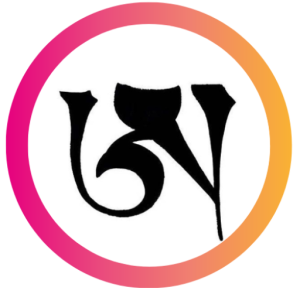
The sacred so-called Ngöndro practice is the foundational practice of Vajrayana Buddhism. The Ngöndro practices are divided into four sections and are profound and powerful means for achieving a deep purification and transformation in body, speech, and mind. They prepare the practitioner for Vajrayana’s profound path, but they also lead her towards enlightenment in a step-by-step fashion.
It’s designed to prepare the sincere practitioner who wishes to go deep into this path. Without the Ngöndro as beginners on the Vajrayana path, there is a risk that we may go astray further on. The Ngöndro is, therefore, to be considered the portal to the tantric practices. So what exactly is tantra?
Do you like what you are reading? Sign up for more blog posts below.
The tantras are the teachings and writings that set out the practices of Vajrayana Buddhism, the third vehicle of Buddhism that mainly comes from old Tibet. This is the form of Buddhism that I’m primarily schooled in. The tantric teachings are based on the principle of the transformation of impure vision into pure vision. It is cultivated as part of the secret Mantra Vajrayana. (The word mantra means that which protects the mind.)
Our practice within the Vajrayana vehicle is based on mantra recitation, visualization, and meditation. In turn, meditation is divided into several different meditation styles, such as Shamatha, Vipassana, Analytical, and Settling meditation.
Most of us in the west often prefer calming or settling meditation initially, while analytical meditation can seem like too much of an effort to start with. It has a more scientific approach to it, which, yes, might appeal to us, but not be in the foreground of our choices when it comes to” choosing” which type of meditation to engage in—speaking of which. Our habit of picking and choosing from the different parts of the path or even different paths may have us end up with nothing. Instead, we recommend examining whatever teachings we come across and settle with a path that we trust. When starting a meditation practice, we recommend beginning with resting or relaxing the mind and then practice analytical meditation only once we have developed some peace of mind. Unless we start building a foundation, our practice will not be stable. Like building a house, we need to begin digging the ground and working on the plumbing.
Once our minds are ready to apply the tantric practices, our ordinary perception is transformed through the step-by-step practice approach towards a ‘sacred outlook,’ where everything is seen and experienced purely in its true nature, through working with the body, energy, and mind. Bypassing the road there and going straight to applying a homemade understanding of sacred outlook without building a foundation is, therefore, a mistake.
Do you like what you are reading? Sign up for more blog posts below.
Although Hindu and Buddhist Tantra have many similarities from the outside, they do have some clear distinctions. For example, the Hindu Tantras has many many schools, where Shivaism might be one of the most commonly known Hindu tantric schools, based on Shiva’s recognition as one of the principal deities of Hinduism. The Hindu Tantric texts are based on dialogues between Gods and Goddesses. This dialogue between God and Goddess is a unique feature of Hindu Tantra that has been written down in their scriptures. Unfortunately, most Hindu Tantras remain untranslated, and their origin veiled in mystery outside of the circles of Sanskrit scholars.
While Buddhism recognizes the Gods and Goddesses as part of the samsaric vehicle within their divine domain and respects them deeply, the Buddhist scriptures don’t base the Dharma on them.
The tantras are such high practices that without a solid foundation in pure outlook and a stable mind, one can easily get lost—That’s why it’s recommended to walk through the portal of Ngöndro to start with. So if the tantric path is something that resonates with you, I strongly recommend that you go slowly, take the step by step approach, and dive in gradually under trustworthy guidance.
Blessed be,
Chimey
Do you like what you are reading? Sign up for more blog posts below.
Get Dharma Blog Posts straight to your device

Tack, Lama! Önskar dig allt gott!
fredag 27 november 2020 skrev Sky Dancer World :
LikeLike
Allt gott till dig med Johan!
LikeLike